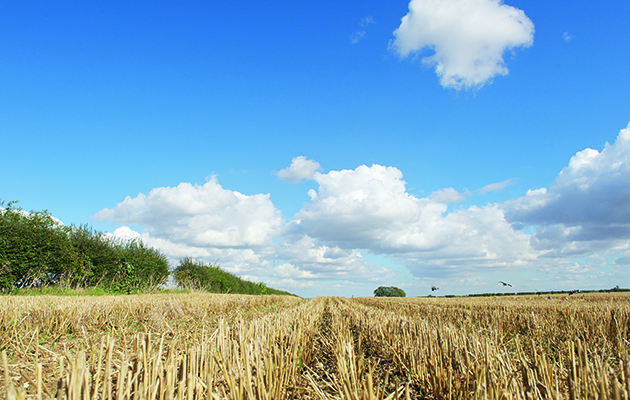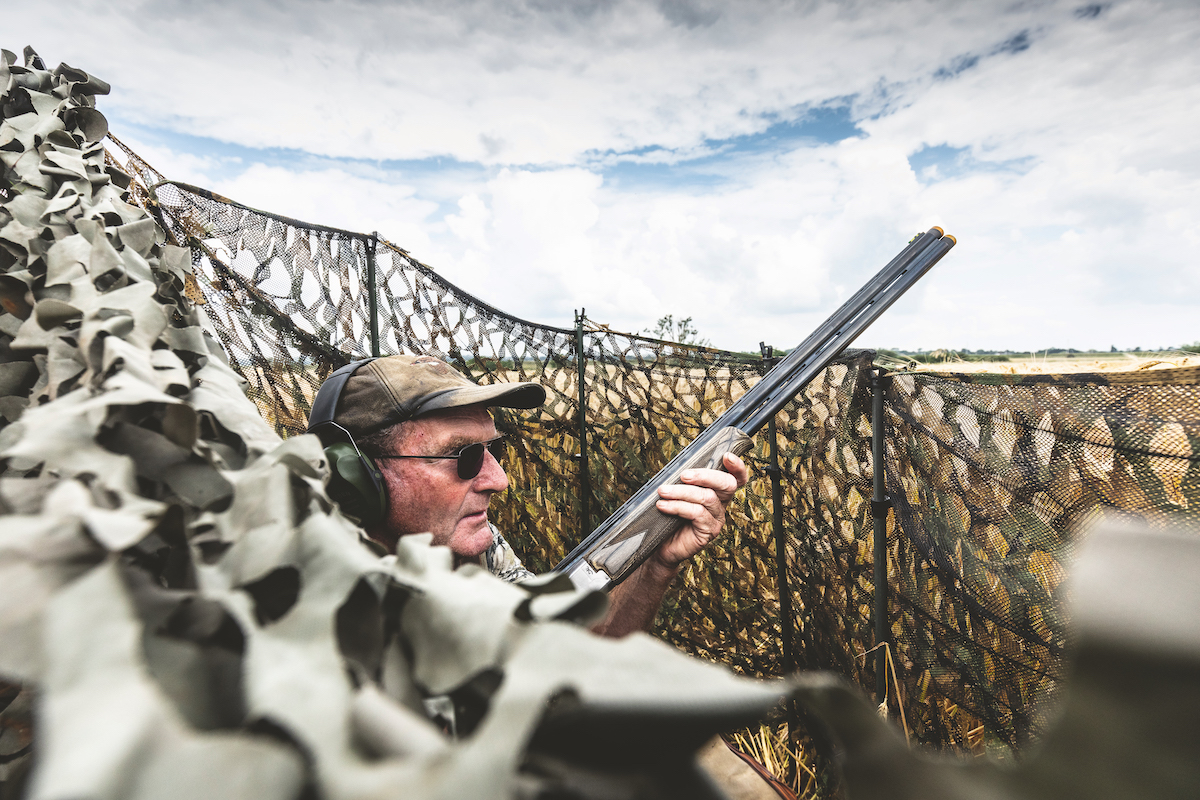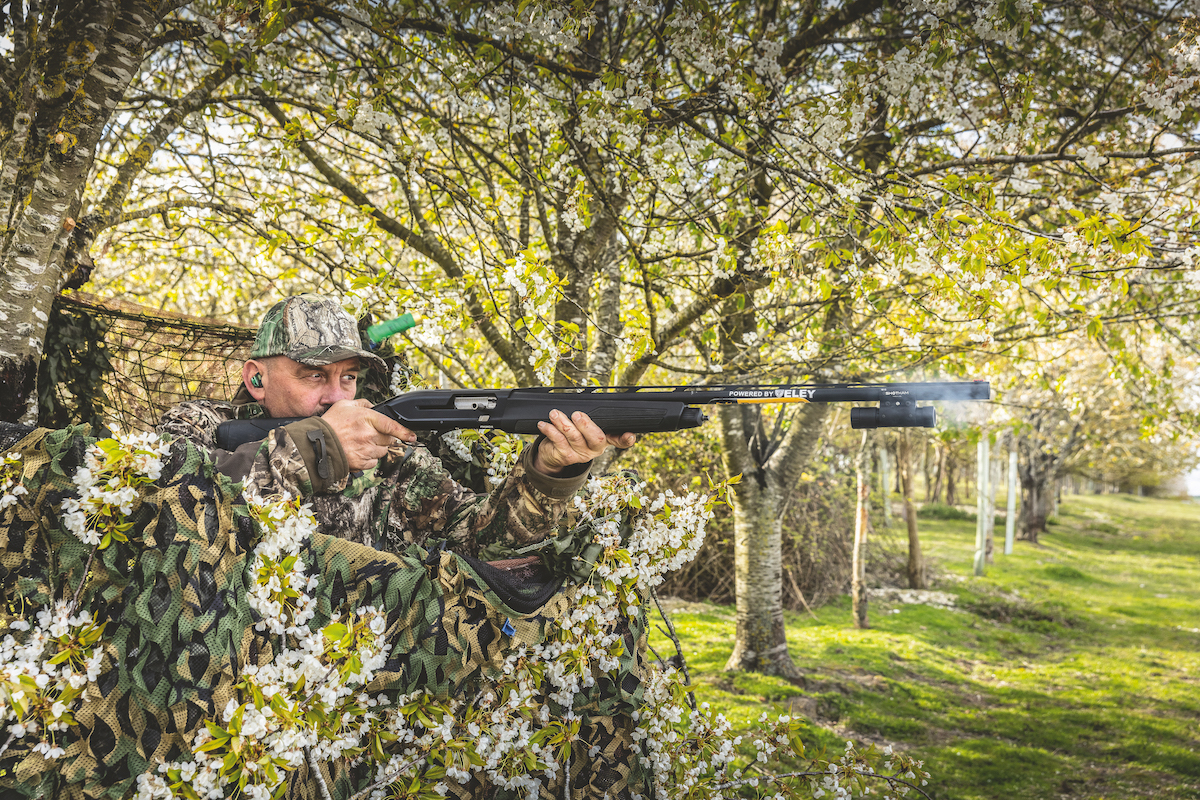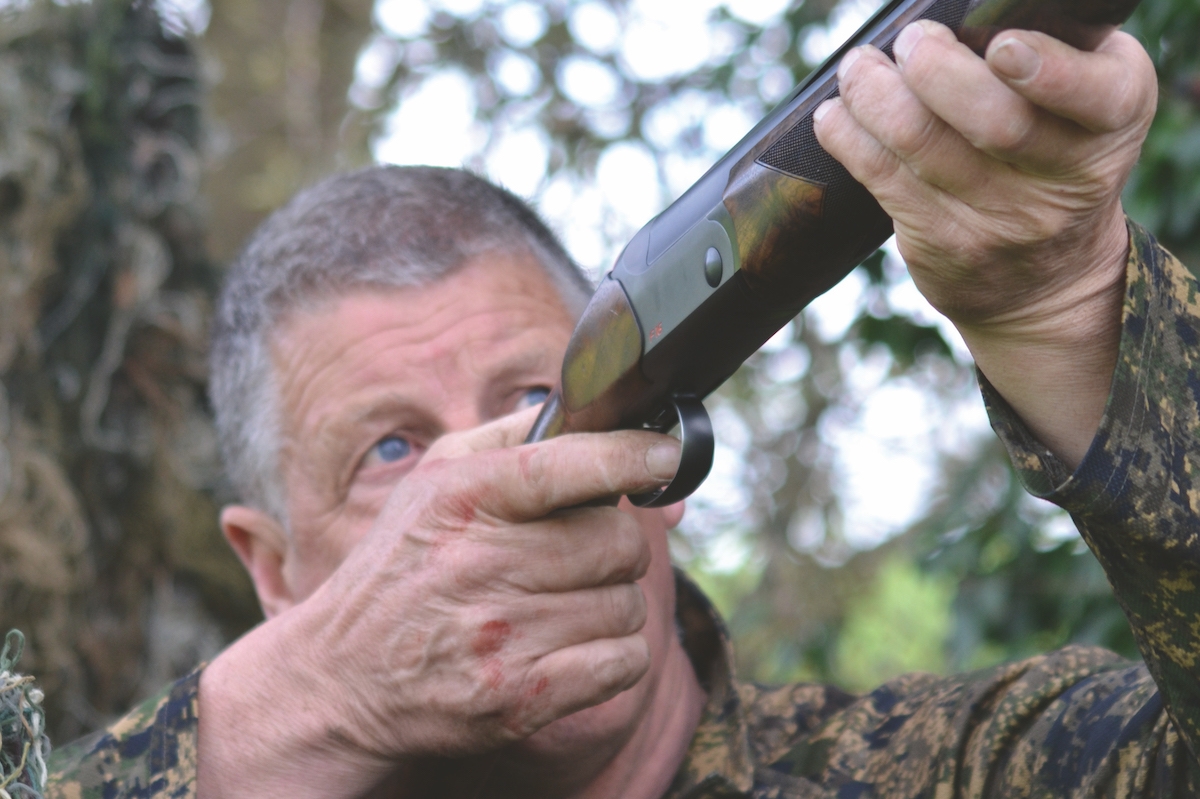Harvest shooting time and the pigeon is easy
The first stubbles will be a huge draw for pigeon and can o ffer rich pickings for shooters. Tom Payne explains how to make the most of the opportunities

Andrew Kay, pigeon shooting, Lincolnshire
Shooting pigeon over stubbles is the pigeon shooter’s easy time of year. The weather is favourable; it’s easy to get to the exact spot where you want to shoot because often you can drive right to it. The short, cold days of shooting over winter rape seem a distant memory and it is the pigeon shooter’s real opportunity to make a significant dent in their pigeon numbers with relative ease.
The first stubble will depend on which crop is fittest for harvest first. Rape and winter barley are at the top of the list. Peas, winter wheat, spring wheat and barley will all follow then, finally, beans. I haven’t mentioned all the stubbles, but how I shoot any of them and the tactics I will use are the same, with the only difference being the choice of hide.
The first stubbles will always be a huge draw and, in many cases, the start of the harvest offers the best opportunities to shoot very big bags. As it goes on, unless there is a break in the weather, you will find yourself shooting smaller bags as the amount of food available is ever increasing.
Learn through reconnaissance
If pigeon do show an interest in a stubble, take a quick walk round the field to assess how much food is available. This will give you a rough idea of how much time you can allow a stubble to build before shooting, and will hopefully give you the opportunity to shoot the chosen field in optimum conditions. There is no need to be out early on recon trips for stubbles; hotter weather and longer days mean that birds will hold back before feeding, especially on very hot days. I do allow the early stubbles to build before shooting but, as more stubbles appear, my urgency to shoot increases to maximise my opportunities
You will find in many cases that feeding will start at around one or two o’clock, with the prime time being around 4pm. You should see the majority of activity around this time. A light wind or breeze will be of great benefit for shooting but it is not always a must.
All traffic arriving at your fields will be in ones and twos and it should be very easy to establish flightlines coming to the field.
An indication as to when birds are feeding heavily on stubbles is when you start to see them “gritting” in the evening, usually along the side of roads. This is a good indicator to show that there is a stubble they are keen on. They need the grit to help break down crops full of grain. If there is water near their chosen field, this is also a good spot to keep an eye on.
A general rule of thumb is the hotter the day, the later they will start to feed. Very hot conditions will keep birds off the wing. They will only head out to feed as temperatures cool.
Watch stubbles carefully. You may miss stubbles that are busy due to the height of the stubble. Tall rape stubble or barley stubble can hide huge numbers of feeding birds so pay careful attention. Sometimes you may only see a few birds arriving to a field and not realise that there are already large numbers feeding.

Magnets can work well over tall stubbles
The ideal decoy patterns and perfect hide
Decoys
When birds find a stubble they want to feed on, there is a lot of activity and you need to try to replicate this with your decoys. In your recon, you will notice that birds build quickly on stubbles to considerable numbers with lots of movement and buzzing around.
Using dead birds will show plenty of activity but avoid setting them out in a regimented fashion — you want to create a picture of movement with birds busy feeding. I use at least 20 static decoys on stubbles and build as I go.
Make sure you don’t close off landing positions for arriving pigeon and, if the stubble is tall, use dead bird cradles to raise the birds level with the stubble, showing them off. Magnets work well over tall stubbles and flappers work well on shorter stubbles and give the impression of plenty of activity.
Don’t be frightened to use dead birds static, as birds arriving in singles will decoy just as well. Floaters or angels in a static display can work well, too. If you do use a magnet, I prefer to cover the base and keep the magnet as low to the ground as possible. This works as a fantastic natural draw from a distance.

Use dead bird cradles to raise the birds level with the stubble
Hides
Bale hides are the ultimate pigeon shooting hide to shoot from and work over every stubble. In an ideal world I would shoot every stubble from a bale hide as I am right in the middle of the action, but this is easier said than done. Barley and wheat straw is normally baled in large round bales or Heston bales and taken off the field very quickly. But if the opportunity comes to shoot from a bale hide, go for it.

Shooting from a bale hide will put you in the centre of the action
Peak harvest
Every year, there comes a point during the harvest when being a pigeon shooter becomes an incredibly difficult task. Many of you reading this may be thinking how could that be. With nice weather and kind conditions how could it be such a tricky task? The simple reason is that the middle of the harvest means stubbles and stubbles everywhere. Unlike the first two weeks where shooting and reconnaissance are easy and straightforward with only a few stubbles and very hungry pigeon, the middle- to late-harvest period is a complete contrast. On the various farms and estates I shoot it is the point when all you seem to do is reconnaissance and, just for good measure, even more reconnaissance.

Oilseed rape is popular with feeding pigeon
Stubbles everywhere and a huge selection of food break up local pigeon populations. Not only that, but timings become difficult with fluctuating weather and wind. It is hard to find any real numbers at the peak of the harvest, not because the pigeon have disappeared but because every restaurant door is open. So how can you improve matters and get back to bagging good numbers? It is not easy, but there are a few things that can help:
- Start a fuel savings account, because you will be doing more recon than shooting. Communicate with farmers and keepers, who can give you the heads-up about activity and save wasted trips.
- Weather can improve the situation and if there has been a spell of rain, get ready for the dry days afterwards.
- Keep a close eye on the farming practices — as the stubbles reduce in number pigeon populations will start to condense.
- Be prepared to make an early call on when to shoot. It could even be on the day you find the birds.
- As the stubbles reduce in number you can afford to let them build up, but when the stubbles are plenty take your opportunities as they arrive. If you let birds build, you run the risk of them finding another fresh stubble and moving on quickly.
Tom’s top tips for harvest shooting
- Pigeon feeding habits at this time of year and over the different stubbles will be the same; the only major factor that will affect timings will be weather. The hotter the day, the later birds will feed. This could mean you will need to start shooting late in the afternoon.
- A light breeze and cloud cover will always help take the heat out of the sun and encourage movement, but it is not a must. You will still be able to shoot good bags in less-than-ideal conditions.
- You can afford to let a stubble that has plenty of food build, but be careful. The more stubbles appear, the more food becomes available.
- Stubbles can be a hive of activity. When decoying you want to show an active scene with your decoys and in many cases you will need to use good numbers.
- Magnets work well on tall stubbles and using more than one flapper can show plenty of movement.
- Bale hides are great to use and shoot from if you can — they work over every kind of stubble.








